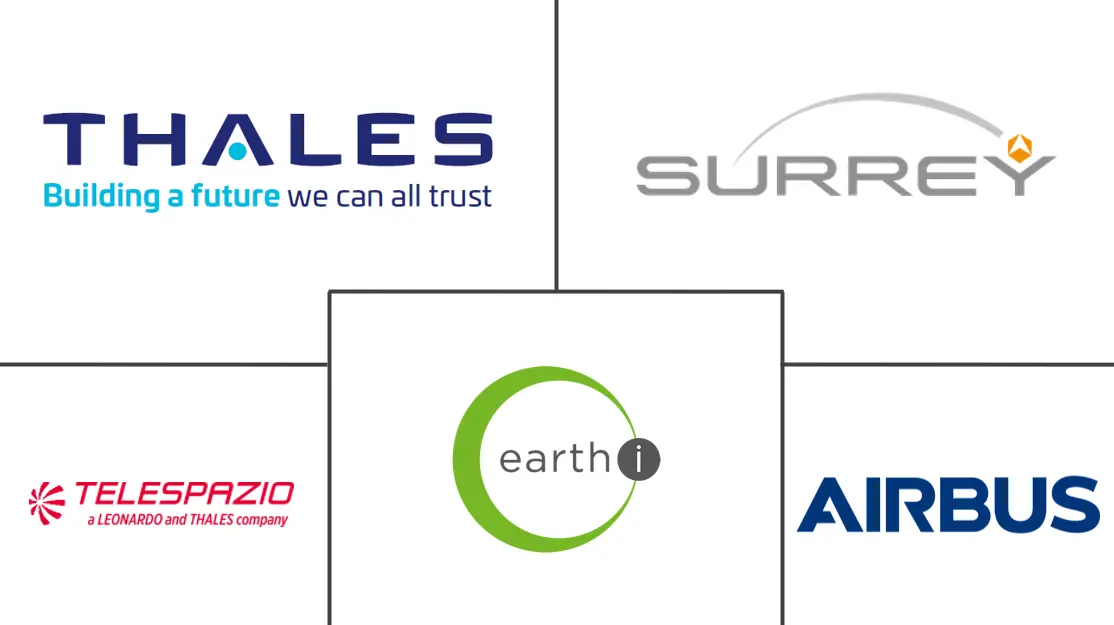UK Satellite-based Earth Observation Market Size and Share
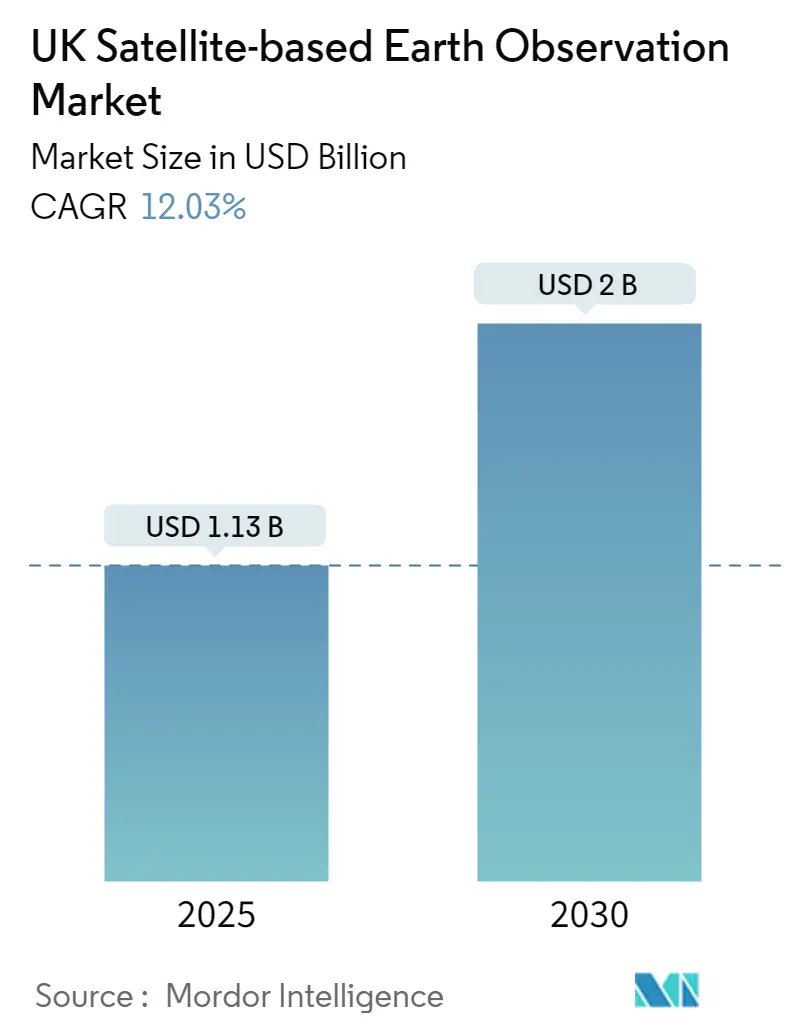
UK Satellite-based Earth Observation Market Analysis by Mordor Intelligence
The UK Satellite-based Earth Observation Market size is estimated at USD 1.13 billion in 2025, and is expected to reach USD 2.00 billion by 2030, at a CAGR of 12.03% during the forecast period (2025-2030).
The growing concern over climate change and its impact on the environment and society is expected to drive the demand for satellite-based Earth observation data. Satellites can provide crucial information on weather patterns, greenhouse gas emissions, deforestation, and other climate-related parameters, enabling better understanding and decision-making to address climate change challenges.
- The United Kingdom is committed to addressing climate change and meeting its emissions reduction targets. Satellite data plays a vital role in monitoring greenhouse gas emissions, tracking changes in the atmosphere and oceans, assessing the health of ecosystems, and understanding climate patterns. This information helps scientists, policymakers, and businesses develop effective climate change mitigation and adaptation strategies.
- Further, the country is prone to various natural hazards, including floods, storms, and landslides. Satellite-based Earth observation plays a crucial role in monitoring and predicting these events, providing early warnings, assessing damage, and supporting emergency response efforts. By observing weather patterns, river levels, and terrain changes, satellites contribute to improved disaster preparedness, risk assessment, and efficient deployment of resources during emergencies.
- In addition, the government has actively promoted and supported satellite-based Earth observation initiatives through various programs and funding schemes. These initiatives aim to address environmental challenges, climate change mitigation, disaster management, and national security. Government support in the form of research grants, partnerships, and policy frameworks has helped drive the market's growth.
- Advances in satellite technology have significantly improved the quality and availability of Earth observation data. High-resolution sensors, enhanced data processing capabilities, and improved satellite constellations have expanded the scope and applications of satellite-based Earth observation. These technological advancements have driven market growth by enabling more accurate, detailed, and timely data collection.
- However, integrating satellite-based Earth observation data with other datasets or existing systems can be challenging due to differences in data formats, standards, and platforms. Lack of interoperability between various data sources and systems may limit satellite data's seamless integration and utilization in decision-making processes. Establishing data standards and promoting interoperability is essential for overcoming this constraint.
UK Satellite-based Earth Observation Market Trends and Insights
Environmental and Climate Change Concerns to Drive the Market Growth
- Environmental and climate change concerns necessitate a robust and comprehensive monitoring system. Satellite-based Earth observation provides a unique vantage point for monitoring various environmental parameters such as land cover, deforestation, urbanization, coastal erosion, and pollution. As the need for accurate and up-to-date environmental data increases, the demand for satellite-based Earth observation services grows, driving market growth.
- The United Kingdom is also committed to addressing climate change through adaptation and mitigation strategies. Satellite-based Earth observation data helps assess climate-related risks, monitor greenhouse gas emissions, track changes in vegetation patterns, and evaluate the effectiveness of mitigation efforts. The market for satellite-based Earth observation expands as policymakers, businesses, and research institutions rely on this data to develop and implement climate change strategies.
- Moreover, environmental concerns in the United Kingdom include preserving natural habitats, conserving biodiversity, and protecting endangered species. Satellite-based Earth observation enables monitoring protected areas, identifying biodiversity hotspots, and tracking habitat changes. The market responds to the demand for data and analytics that support effective conservation and biodiversity management initiatives.
- The increase in government expenditure on environmental protection reflects its priorities in addressing environmental challenges. Higher expenditure indicates a greater emphasis on environmental conservation, sustainability, and climate change mitigation. Satellite-based Earth observation, an environmental monitoring and management tool, aligns with these priorities and may receive some allocated funds.
- Moreover, Government expenditure on environmental protection may include research and development initiatives funding. This funding can support advancements in satellite technology, data analysis techniques, and applications related to Earth observation. Investments in research and development can significantly contribute to the growth and innovation of the satellite-based Earth observation market.
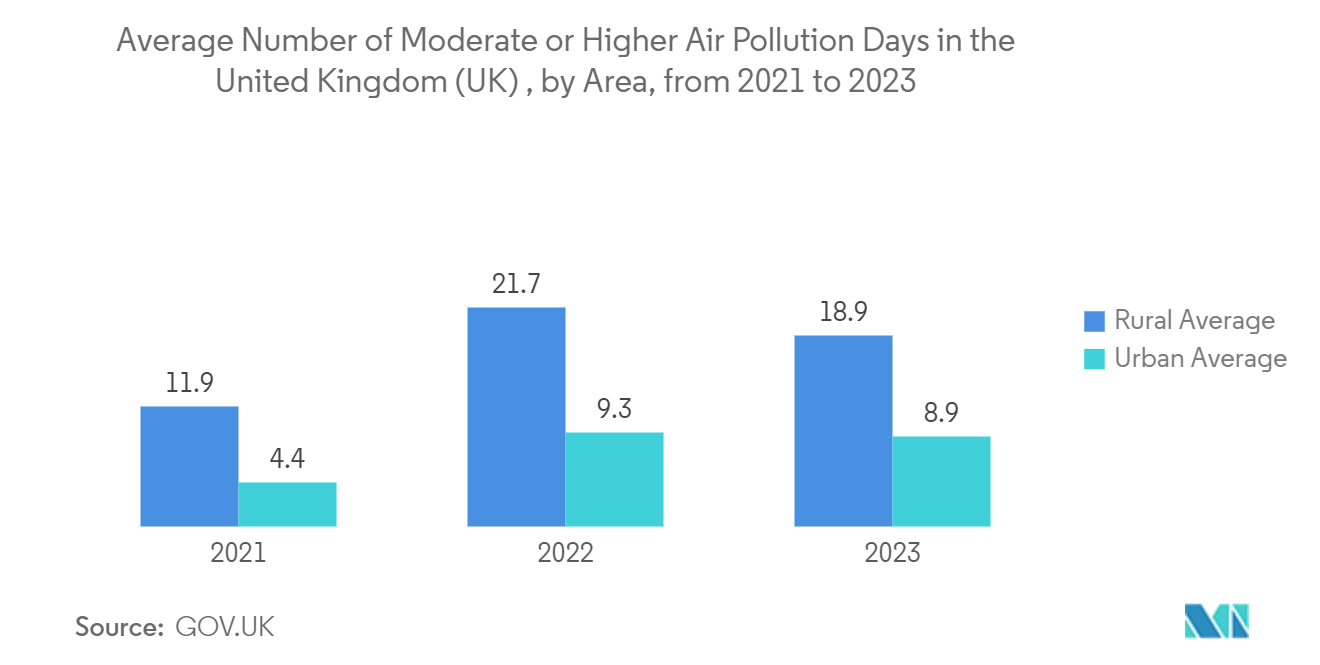
Urban Development and Cultural Heritage Segment to Hold a Significant Market Share
- Satellite-based Earth observation plays a crucial role in urban planning and infrastructure development. High-resolution satellite imagery provides detailed information on land use patterns, population distribution, urban growth, and infrastructure networks. This data helps urban planners make informed decisions regarding land allocation, transportation planning, and the development of sustainable and resilient urban areas.
- In addition, The United Kingdom has a rich cultural heritage, including historical buildings, archaeological sites, and cultural landscapes. Satellite-based Earth observation is used to document, preserve, and monitor cultural heritage sites. High-resolution imagery and 3D modeling help in mapping and conservation planning, detecting potential threats, and ensuring the long-term preservation of cultural heritage assets.
- Moreover, satellite-based earth observation supports disaster risk management in urban areas. By monitoring changes in land cover, vegetation, and other indicators, satellites help identify vulnerable regions, assess risks, and support early warning systems for natural disasters. This information is vital for effective emergency response planning, reducing the impact of disasters on urban areas and cultural heritage sites.
- Satellite-based Earth observation plays a crucial role in monitoring and managing wildfires, including their impact on urban areas, infrastructure, and cultural heritage sites. By analyzing satellite imagery and other data sources, the authorities can assess the extent of wildfires, monitor their spread, and plan appropriate response strategies.
- Furthermore, satellite-based Earth observation is a crucial component of smart city initiatives. It helps implement smart technologies for efficient resource management, traffic management, energy optimization, and improving the quality of life in urban areas.
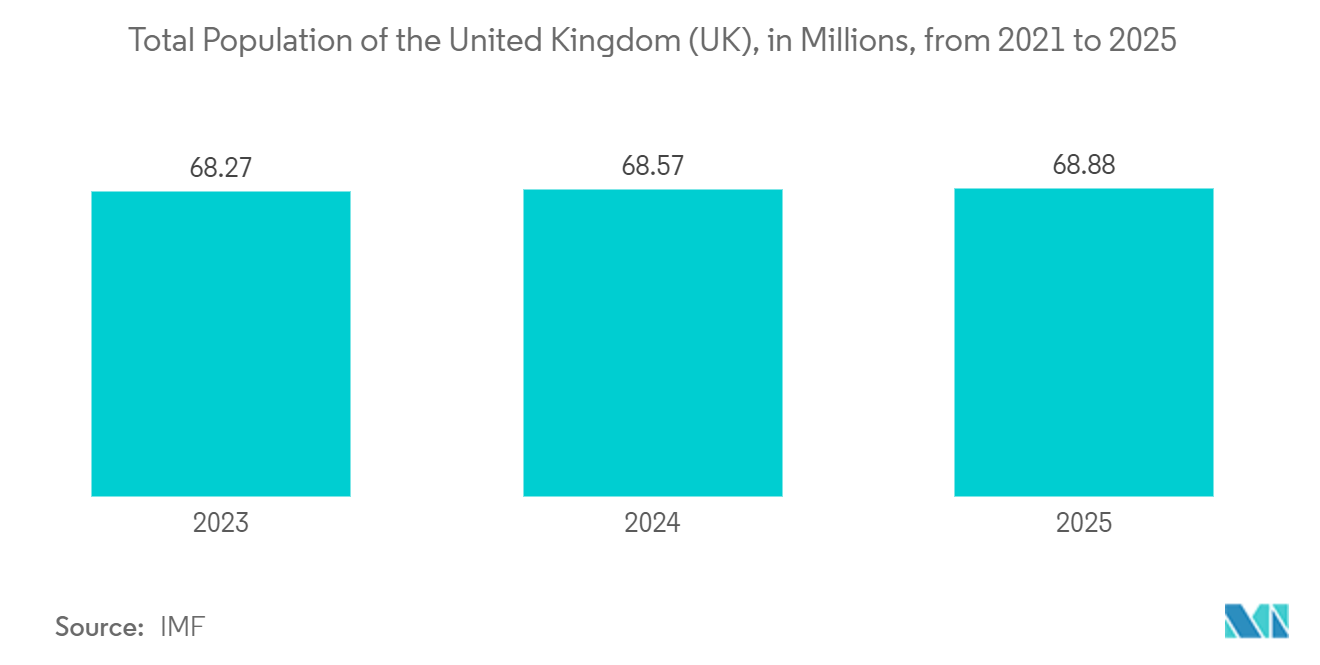
Competitive Landscape
The United Kingdom Satellite-based Earth Observation Market is expected to be moderately consolidated. A few significant players in the United Kingdom, such as Thales Group, Airbus Defence and Space and Surrey Satellite Technology Ltd (SSTL), have a considerable presence and expertise in satellite manufacturing, operations, and Earth observation services. These companies have a long-standing track record and have developed advanced satellite systems for various applications.
In May 2023, the UK Ministry of Defence's next-generation secure communications satellite, SKYNET 6A, was announced to be thoroughly tested by Airbus at the National Satellite Test Facility (NSTF) in Harwell in Oxfordshire. The NSTF, a government-funded organization with a budget of EUR 116 million and run by specialists from the STFC RAL Space (Science and Technology Facilities Council), will conduct the SKYNET 6A test campaign, which will include testing for electromagnetic compatibility, acoustic and thermal vacuum, and electromagnetic compatibility to replicate the harsh conditions of space.
In April 2023, a commercial Earth Observation (EO) pilot program was commenced by the Geospatial Commission, a Department for Science, Innovation, and Technology (DSIT) division for several UK public sector organizations. The program will help unlock EO technology's potential in crucial policy areas, ranging from land use to emergency incident response. The EO pilot project will be carried out in cooperation with Airbus Defence and Space and will continue through the end of March 2024.
UK Satellite-based Earth Observation Industry Leaders
-
Thales Group
-
Airbus Defence and Space UK
-
Surrey Satellite Technology Limited (SSTL)
-
Telespazio UK Ltd
-
Earth-i Ltd
- *Disclaimer: Major Players sorted in no particular order
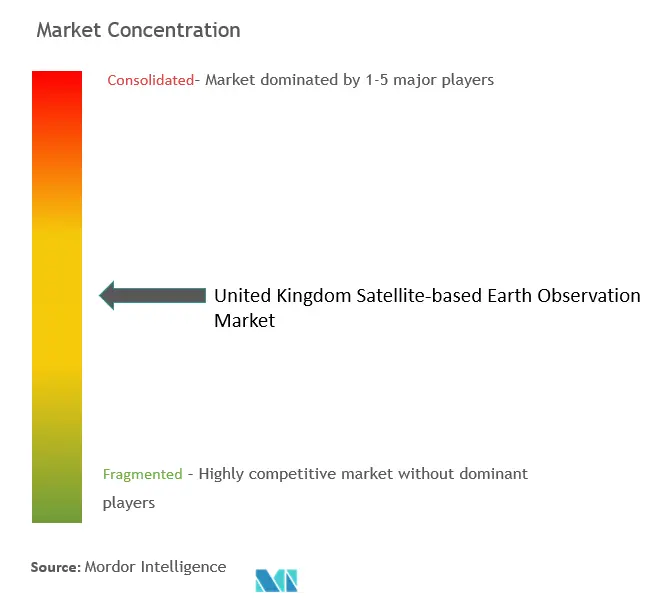
Recent Industry Developments
- March 2023: The Earth Observation Climate Information Service (EOCIS) was introduced by the National Centre for Earth Observation (NCEO) of the UK, allowing the country to develop, manage, and extend regional and global climate data through its service. The new national project EOCIS, supported by the UK government through its Natural Environment Research Council (NERC), intends to convert Earth observation (EO) findings into data that will allow action on heatwaves, urban floods, and the quality of coastal waters.
- November 2022: The UK government released a significant EUR 1.84 billion financing announcement to help the Earth Observation industry. The UK Government has announced the package that would allow its space industry to cooperate with ESA on internationally important missions to counteract the Earth observation sector's instability and strengthen the UK's position as a prominent global player in space technology.
UK Satellite-based Earth Observation Market Report Scope
Satellite-based earth observation is done with the help of satellites orbiting around the planet to view and identify environmental changes, map making, etc. The satellite-based earth observation technology captures and stores information from satellites relating to the physical, biological, and chemical compositions of the Earth for monitoring, surveillance, and decision-making in various verticals, such as defense and intelligence, infrastructure and engineering, natural resource management, energy and power, and disaster management.
The United Kingdom satellite-based earth observation market is segmented by type (earth observation data, value added services), satellite orbit (low earth orbit, medium earth orbit, geostationary orbit), and end-user (urban development and cultural heritage, agriculture, climate services, energy and raw materials, infrastructure). The market sizes and forecasts are provided in terms of value (USD) for all the above segments.
| Earth Observation Data |
| Value Added Services |
| Low Earth Orbit |
| Medium Earth Orbit |
| Geostationary Orbit |
| Urban Development and Cultural Heritage |
| Agriculture |
| Climate Services |
| Energy and Raw Materials |
| Infrastructure |
| Others |
| By Type | Earth Observation Data |
| Value Added Services | |
| By Satellite Orbit | Low Earth Orbit |
| Medium Earth Orbit | |
| Geostationary Orbit | |
| By End-use | Urban Development and Cultural Heritage |
| Agriculture | |
| Climate Services | |
| Energy and Raw Materials | |
| Infrastructure | |
| Others |
Key Questions Answered in the Report
How big is the UK Satellite-based Earth Observation Market?
The UK Satellite-based Earth Observation Market size is expected to reach USD 1.13 billion in 2025 and grow at a CAGR of 12.03% to reach USD 2.00 billion by 2030.
What is the current UK Satellite-based Earth Observation Market size?
In 2025, the UK Satellite-based Earth Observation Market size is expected to reach USD 1.13 billion.
Who are the key players in UK Satellite-based Earth Observation Market?
Thales Group, Airbus Defence and Space UK, Surrey Satellite Technology Limited (SSTL), Telespazio UK Ltd and Earth-i Ltd are the major companies operating in the UK Satellite-based Earth Observation Market.
What years does this UK Satellite-based Earth Observation Market cover, and what was the market size in 2024?
In 2024, the UK Satellite-based Earth Observation Market size was estimated at USD 0.99 billion. The report covers the UK Satellite-based Earth Observation Market historical market size for years: 2019, 2020, 2021, 2022, 2023 and 2024. The report also forecasts the UK Satellite-based Earth Observation Market size for years: 2025, 2026, 2027, 2028, 2029 and 2030.
Page last updated on:
UK Satellite-based Earth Observation Market Report
Statistics for the 2025 UK Satellite-based Earth Observation market share, size and revenue growth rate, created by Mordor Intelligence™ Industry Reports. UK Satellite-based Earth Observation analysis includes a market forecast outlook for 2025 to 2030 and historical overview. Get a sample of this industry analysis as a free report PDF download.
